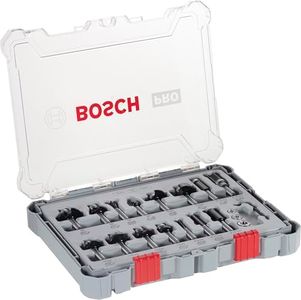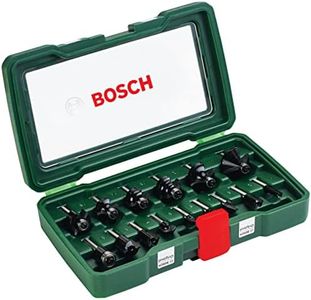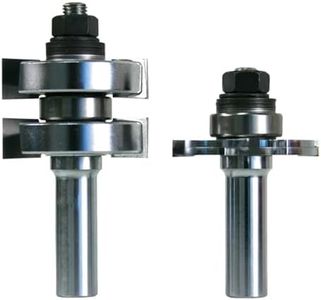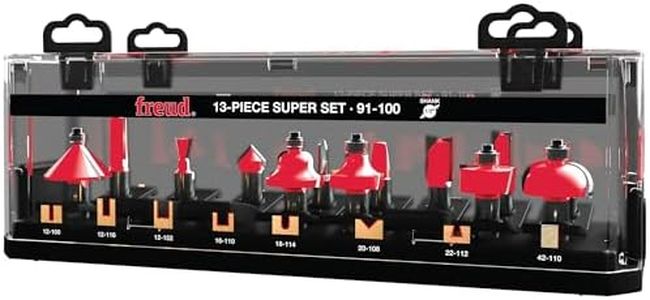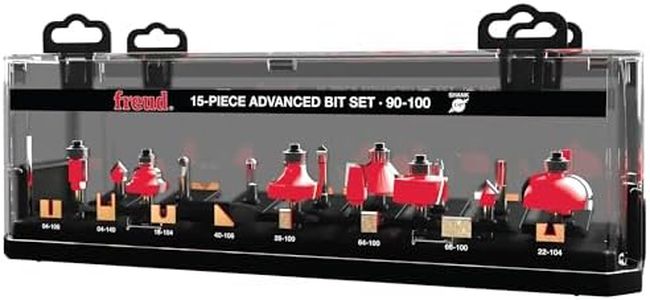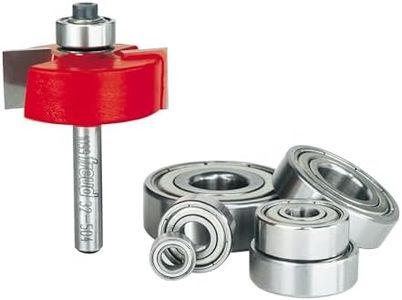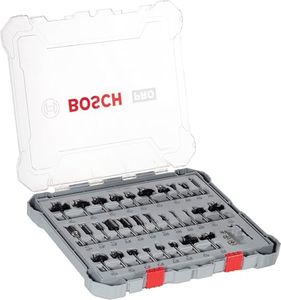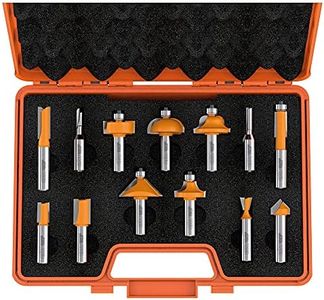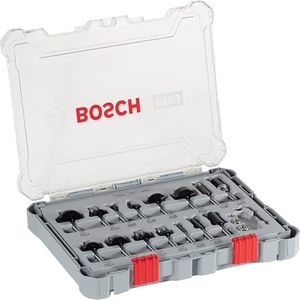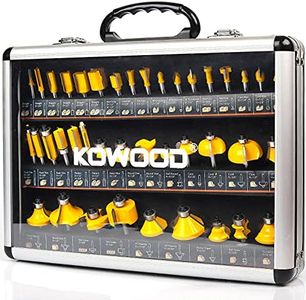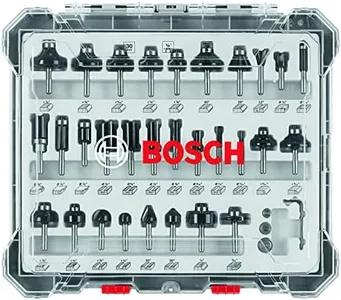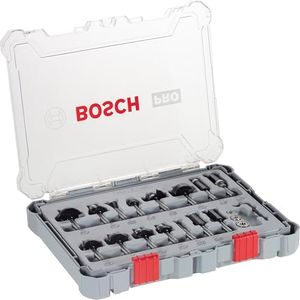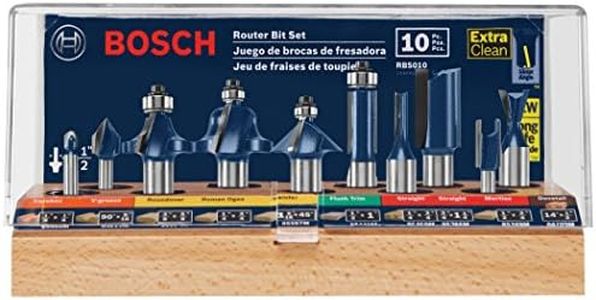We Use CookiesWe use cookies to enhance the security, performance,
functionality and for analytical and promotional activities. By continuing to browse this site you
are agreeing to our privacy policy
10 Best Router Bits
From leading brands and best sellers available on the web.Buying Guide for the Best Router Bits
Picking router bits can feel overwhelming because there are so many shapes, sizes, and purposes. The right set of router bits will greatly improve your woodworking projects, making cuts cleaner and more accurate. Your ideal choices depend on what kind of woodwork you do most often, and how detailed or heavy-duty your tasks are. Understanding the main specifications will help you sort through the options and pick the best ones for your needs.Shank DiameterThe shank diameter is the thickness of the part of the bit that fits into your router. The common sizes are 1/4 inch and 1/2 inch. A 1/2-inch shank is generally sturdier, vibrates less, and provides smoother cuts, which is especially useful for heavy-duty or precise work. A 1/4-inch shank is suitable for lighter tasks and smaller routers, but may not be as stable for tougher jobs. To choose, check what shank size your router can accept and pick the larger size if possible, especially if you want a cleaner finish or plan to do more demanding routing.
Bit MaterialRouter bits are typically made from high-speed steel (HSS) or carbide. HSS bits are less expensive and handle basic wood tasks but wear out faster. Carbide tipped bits last longer, stay sharper, and are better for frequent use or for cutting tougher or abrasive materials. If you’re starting out or working with softwoods only occasionally, HSS is fine. For repeat work, harder woods, or a wider range of tasks, carbide bits will be a better investment.
Bit Type/ProfileThe shape of the bit determines the cut it makes—straight, round-over, ogee, chamfer, dovetail, etc. Straight bits are versatile for making grooves and dados, while shaped bits allow you to add decorative edges or special joinery. Think about what kinds of projects you will do. If you’re building furniture or cabinets, a set including common profiles like straight, round-over, and chamfer bits is a good start. For more specialized projects, pick bit shapes that match your intended designs.
Number of FlutesFlutes are the cutting edges on the bit. Most bits have two flutes, which provides a good balance between cutting speed and smoothness. Single flute bits remove material quickly and are often used for softer materials. More than two flutes (like three or four) produce a smoother finish but cut slowly and require more powerful routers. For general woodworking, two flutes is a safe and versatile choice. If you need extra smoothness or faster stock removal, you can consider other options based on your specific needs.
Bearing GuideSome router bits have a ball bearing guide that runs along the edge of your workpiece, controlling the cut. These are called bearing-guided or pilot bits and are useful for following templates or making edge profiles. If you want to do a lot of pattern work or edge finishing, consider bits with bearings. If you only plan straight cuts or grooves, non-guided bits might be all you need.
Overall Bit SizeThis includes both the cutting diameter and the overall length of the bit. Larger diameter bits can make wider cuts and are better for edge work, but need to be used at slower speeds and with a powerful router. Smaller bits are good for fine details and tight corners. Match the size of the bit to your project: larger for big, broad cuts; smaller for detailed, intricate work.
